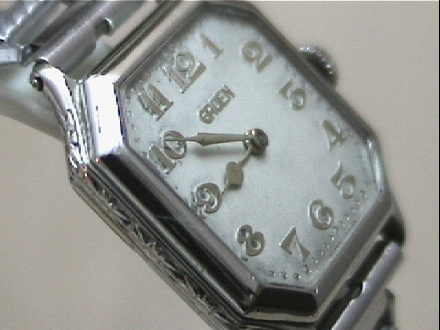
The Gruen Watch Company itself used 1876 in advertising until about 1915. Articles, books and jewelers' newsletters from the 1800s all give 1876 as the founding date. Although 1874 was used later by the Gruen Watch Company as a founding date, and is the date given in nearly all recent histories, I don't believe that this is correct. The first offices were at 117 1/2 High Street in Columbus. (Image courtesy of the Columbus Metropolitan Library.)ĭietrich started the Columbus Watch Manufacturing Company in 1876. Today, there is a small historical plaque marking the former location of the Deshler Block. This building was diagonally across the street from the Ohio state capitol building this photo was taken near the corner of the capitol's lawn. There is a large sign in the shape of a pocket watch hanging between the first and second awnings. The Columbus Watch Manufacturing Company was located in the large building on the left, called the 'Deshler Block,' at 1 North High Street. In his patent application, Dietrich gave his address as Delaware, Ohio, an indication that he was not yet making watches in Columbus.ġ876: The Columbus Watch Manufacturing CompanyĪbove: A view of the corner of Broad and High Streets in Columbus, probably taken in the early 1880s.

The pinion itself would not be injured and did not need to be replaced.

Dietrich's invention consisted of a simple device which, in the event of mainspring breakage, uncoupled the pinion and allowed it to spin freely without passing the dangerous shock through the shaft to the center wheel and the rest of the mechanism. The safety pinion, mounted on the shaft which also holds the center wheel, is the interface between the potentially destructive power in the mainspring and the fragile moving parts in the rest of the watch. The recoil, caused by the sudden release of the energy stored in the spring, could strip teeth off of wheels and snap pivots, doing tremendous damage to the movement. In later years, alloys for unbreakable mainsprings were developed, but the large and powerful mainsprings used in older pocket watches tended to be brittle and commonly broke. See the patents page for the complete illustration and text. Right: A detail from Dietrich's 1874 safety pinion patent drawings. Because this was his first important contribution to horology, in the future the Gruen Watch Company would take 1874 as its founding date. On June 12, 1874, Dietrich applied for a patent on an improved safety pinion, which was granted on December 22. Fred was to become an important figure in the Gruen story. Years later, a Gruen advertisement told how “one word from a woman's lip” (Pauline’s “yes” to Dietrich’s marriage proposal) changed horological history.ĭietrich and Pauline's first son, Frederick G. Louis, Cincinnati and Columbus, Dietrich married Pauline in 1869, moved to Delaware, Ohio, and went to work for her father. One brother had been killed in 1863, in the American Civil War.ĭuring his visit, Dietrich met and fell in love with Pauline Wittlinger, a schoolteacher and the daughter of a Delaware, Ohio watchmaker. following his three brothers, who had immigrated several years earlier. He was an apprentice to a watchmaker named Martens in Friedburg, Germany, and also worked in the towns of Carlsruhe, Wiesbaden and Lode.

After attending both public and private schools, at age 15 he was sent away from home to learn the watchmaking trade. (Image courtesy of the Columbus Metropolitan Library.)ĭietrich Gruen (originally spelled 'Grün') was born in Osthofen, Germany in 1847. T H E G R U E N W A T C H C O M P A N Y 1867 - 1894Īlthough the Gruen Watch Company was founded in 1894, the company later traced its history back to 1874, following the early career of its founder.ĭietrich Gruen (1847-1911), founder of the Columbus Watch Company and co-founder (with his oldest son) of the Gruen Watch Company this engraving was printed in 1891. Gruen Watch Company history: 1867-1894: The Columbus Watch Company


 0 kommentar(er)
0 kommentar(er)
